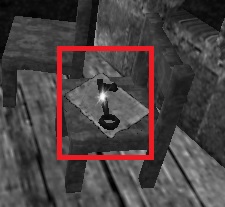I feel that dialogue and enivornment in games are telling story the most. But how to exactly do that in classic horror/survival-horror adventure? In A Short Tale of Solitude for making narration and creating detailed lore, we decided to use static scenes with close-up 3d models . Furthermore, particular game setting and graphics style gave us a chance to dispense with lips moving or character emotions. This would add a whole lot more visual interest and personality to the technique, without a very large cost. 
Interaction with lore/quest object.
Perhaps the most important thing to understand about the ASTOS narration method is that it isn’t linear. For example: NPCs will not only speak in a strange, disturbing style but they will respond to actual situation in game world. Obviously we decide to use full entirely node-based system, using special dth.engine toolset graph tool, and support various script nodes (variables, compare, special command, etc.). 
Conversation in dth.engine toolset
Moreover, game environments that are filled with objects will therefore help immerse the player into the game world. It may be books, notebooks, keys and other stuff. So, what about presentation of that objects? First round of Alpha Testing show us that could be a serious problem for players who never play in that kind of games before. They get lost, again and again, so objects, which are crucial for the game progress needed to be more visible. 
Object flashing.
Finaly, to solve that, we used object flashing and new room design for the most problematic areas. Now everyone is able to beat the game of course not at the same time, but it’s completly a different story :)